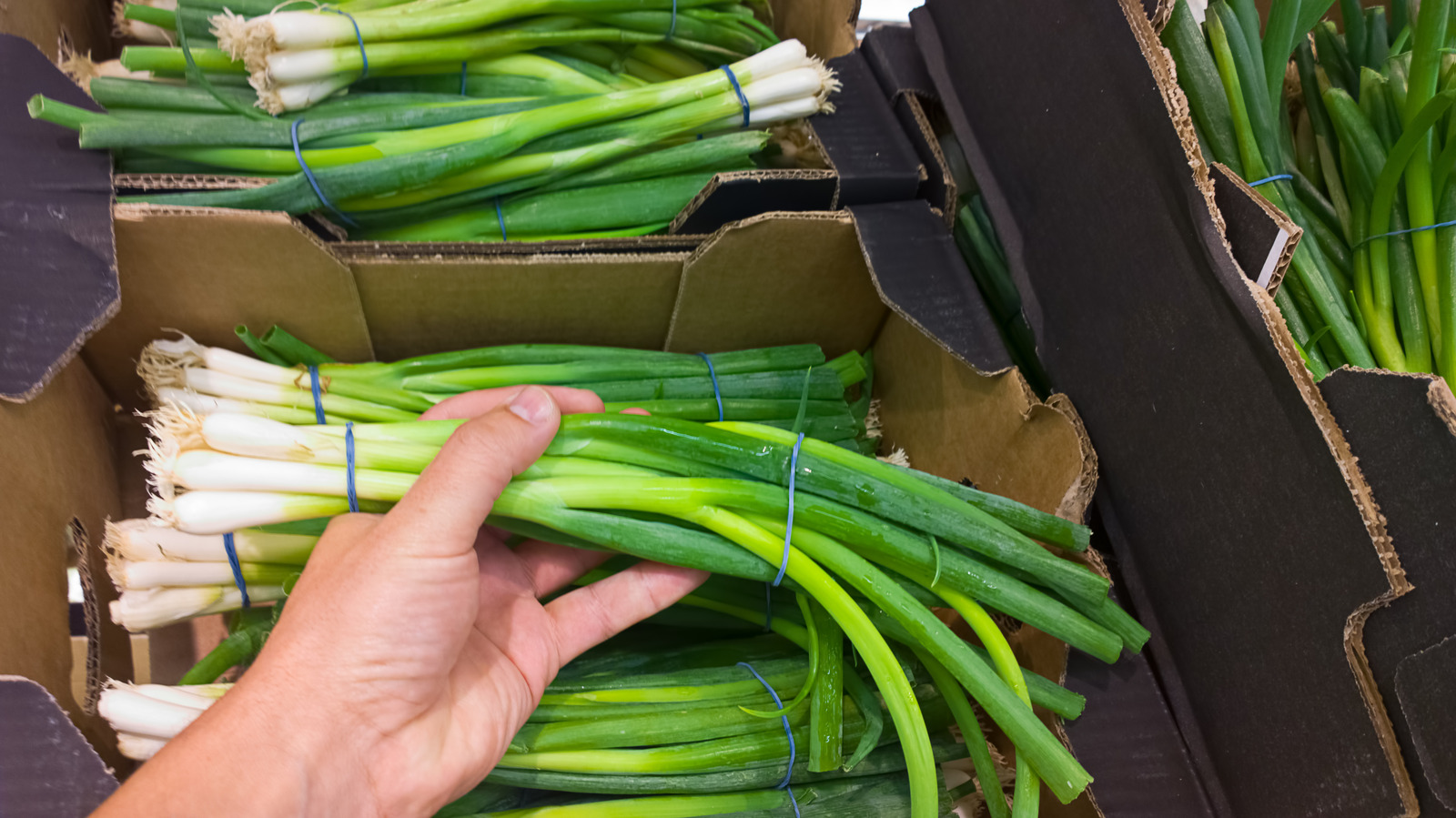In the world of onions, there are tons to choose from — red, sweet, yellow, or white could all find their way into various recipes, and each come with their own unique flavor profile (try these tricks for cutting them without crying!). But when it comes to the stalky, green variety you might spot at the grocery store, it’s a bit harder to decipher the different kinds. Chives, green onions, and scallions all look remarkably similar — long, green, and leafy. And if you’ve never cooked with them, you might even mistake them for a plant. But all three are undeniably delicious additions to any savory recipe, and they work even better when you understand the nuances.
Despite the different names, scallions and green onions are virtually the same vegetable and can be used interchangeably. Each plant is harvested early from the Allium cepa species of onions, which contributes to their signature look. Both have thin stalks with a small, stringy bulb at the bottom from where it was pulled from the soil, showcasing its roots. Scallions are harvested earlier, so their bulbs are thinner. Both are whiter and hard toward the bottom and become green and soft toward the top.
The two sides differ in flavor, and each has different purposes in cooking. When you use the whiter part toward the root, the flavor tends to be more intense with a bite, more akin to a white onion, and it’s great to use to enhance the flavor of soups and sauces. Meanwhile, the green tops are milder and fresh tasting — perfect to use as a garnish.
Chives are in their own category
Although they resemble scallions and green onions, chives are in a category all on their own. It might surprise you to find out that they aren’t a form of an onion — they’re actually considered an herb. They are a part of the Amaryllidaceae family of flowering plants. Appearance-wise, chives are much thinner than scallions and green onions, typically less than ½ inch wide with a deeper green color throughout. Most notably, there is no bulb at the bottom — that’s the easiest way to identify you’re picking up a chive at the store versus a green onion.
When it comes to flavor, chives have a much more mild onion taste, with a bit of a garlicky bend. Since they don’t have as much of a bite as their onion cousins, chives are easier to eat raw and can be sliced thinly to use as a garnish on almost anything. From enhancing eggs, potatoes, or chicken to the perfect topper on a bagel topped with cream cheese, chives are incredibly versatile. And despite the fact that they’re not technically onions, that doesn’t mean you can’t substitute them in place of green onions or scallions in a recipe. Be aware that because they don’t pack as much punch, so if you do plan to swap them in, make sure you add more to up the flavor. And since they are far more delicate, limit how long you cook them for to avoid a crispy, burnt chive.





